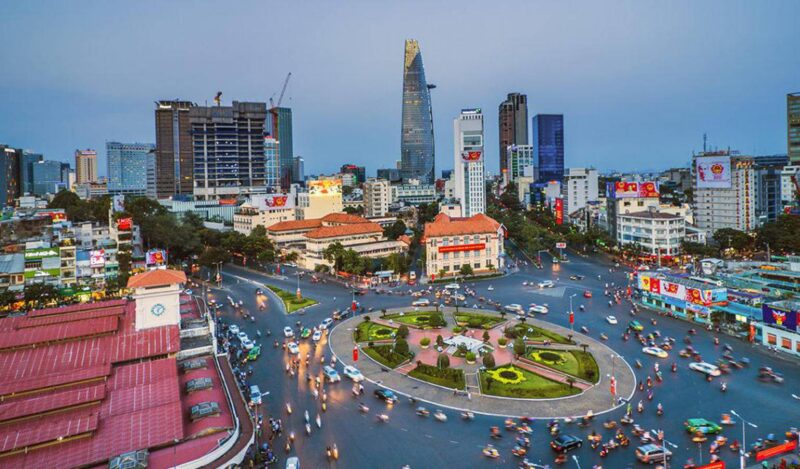Let's explore the cultural history and beauty of SAIGON
History, Culture, and the Prosperous Beauty of Saigon, Vietnam
Saigon, now known as Ho Chi Minh City, is one of the most important economic, cultural, and historical centers of Vietnam. For a long time, Saigon has borne the marks of prosperity, cultural blending, and impressive historical transformations. From its early milestones to its modern development, this city has consistently played a leading role in many fields.
Historical Origins
Saigon originated from Khmer lands, initially named "Prey Nokor," meaning "city in the forest." In the 17th century, the area began witnessing large migrations of Vietnamese from the north during the southern expansion process. In 1698, Saigon's history marked a significant turning point when the Khmer Empire officially ceded this area to Vietnam

During the French colonial period (1859–1954), Saigon was planned and developed as a model Indochinese city, boasting the most modern infrastructure in the region at that time. Many structures bearing strong French architectural influences still stand as historical witnesses: Notre-Dame Cathedral, the Central Post Office, and the Saigon Opera House.
Cultural Interweaving
Saigon is a vibrant cultural melting pot. Throughout its history, the city has witnessed waves of migration from all over. Each cultural contribution—whether from the Chinese, the Khmer, or international communities—has created a rich mosaic.
The Chinese community played a vital role in shaping Saigon, especially in the Cholon area. The bustling Chinatown is considered an economic lifeline for southern Vietnam. Traditional festivals such as the Nghinh Ong Festival, Vu Lan, and temples like Thien Hau Temple and Tam Toa Temple remain deeply significant
Saigon is also a meeting point of Eastern and Western cultures. Alongside Eastern-style temples like the Jade Emperor Pagoda and Giac Lam Pagoda, the city is home to French colonial buildings and European-style cafes.
Modern Prosperity and Beauty
The city center, with skyscrapers like the Bitexco Financial Tower, Landmark 81, and the bustling District 1, showcases a rapidly developing metropolis. At night, shimmering lights turn Saigon into a "city that never sleeps." Walking streets like Nguyen Hue and Bui Vien have become popular hangouts for both tourists and locals.
However, alongside modernization, the city still preserves its traditional markets like Ben Thanh Market, Cholon, and its small alleys marked by the passage of time.
Saigon is not only the largest economic center of the country but also a vivid picture of cultural blending and historical change. Its diverse historical and cultural characteristics have shaped the unique identity of this city.
Today, Saigon stands as a symbol of rapid development while retaining the prosperous cultural soul of southern Vietnam.
































































![[LIVE] Engage2Earn: McEwen boost for Rob Mitchell](https://cdn.bulbapp.io/frontend/images/c798d46f-d3b8-4a66-bf48-7e1ef50b4338/1)




